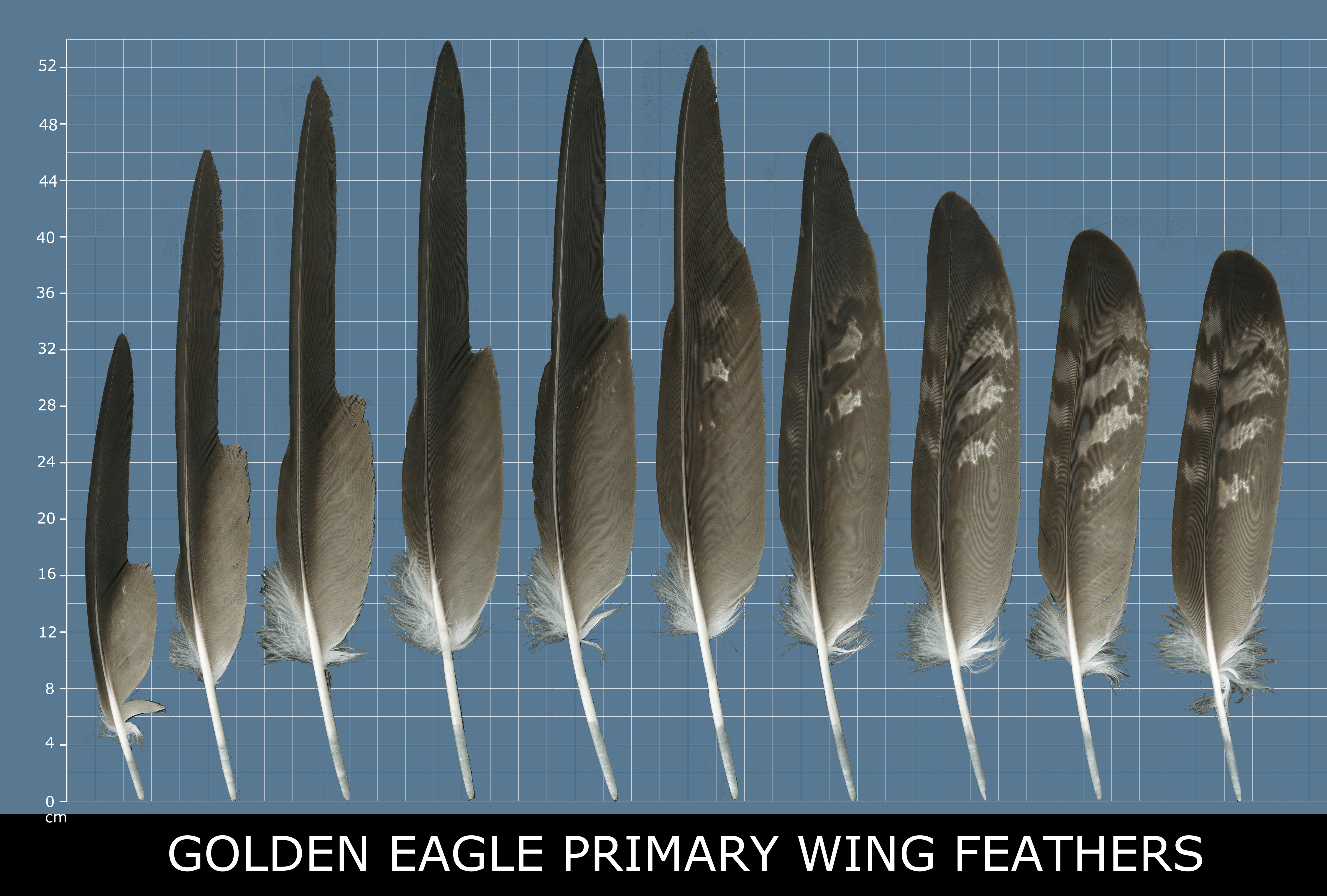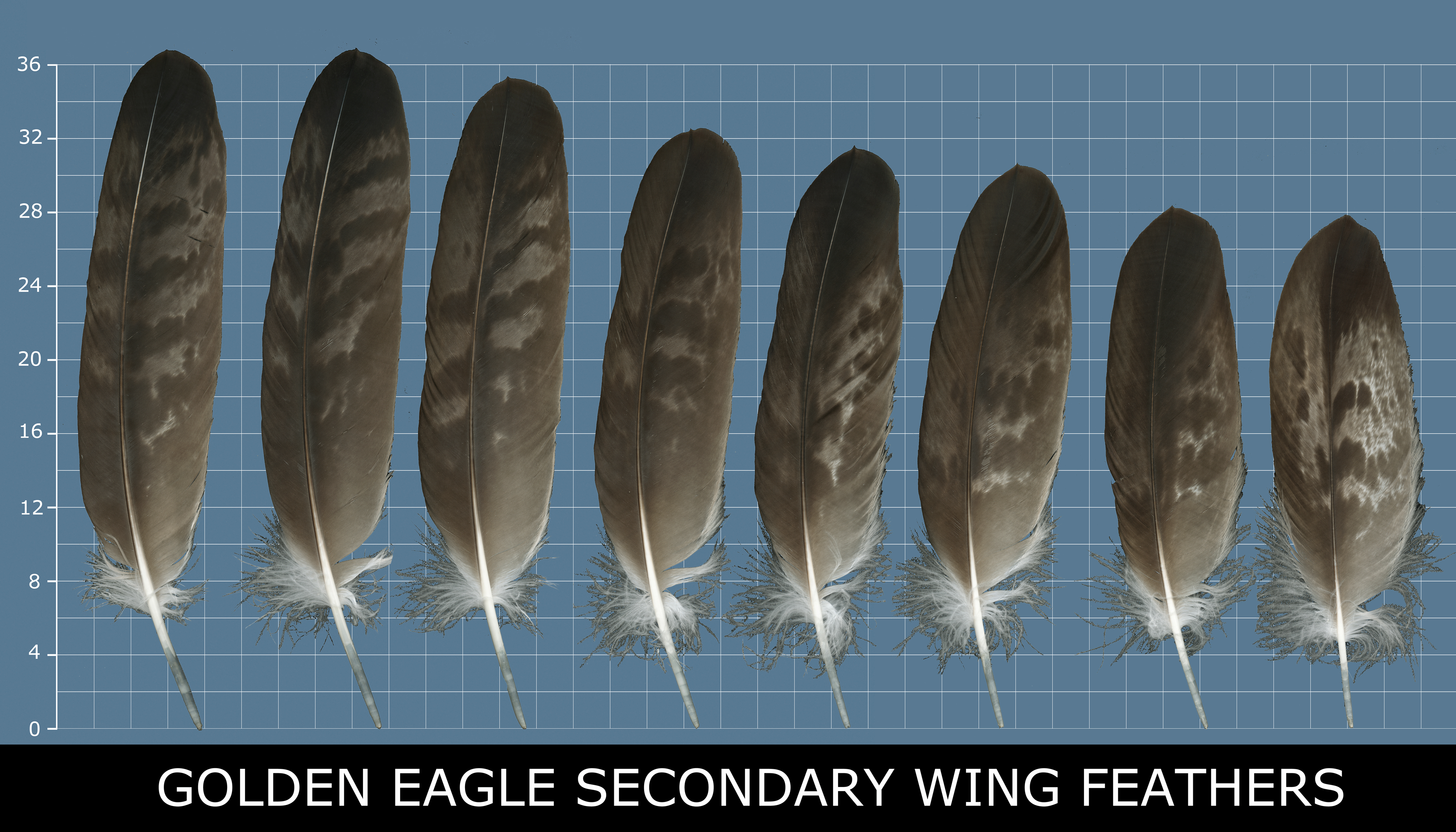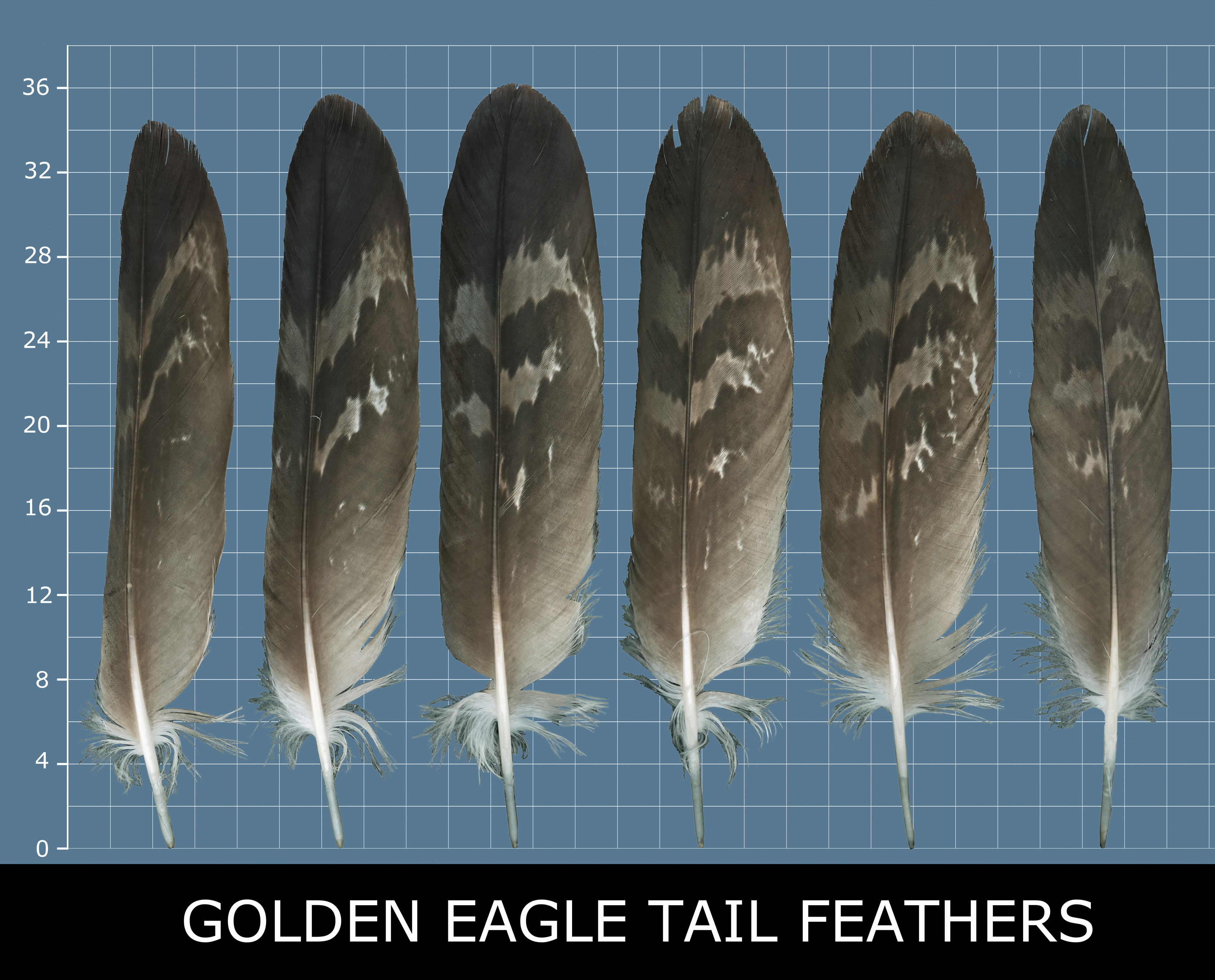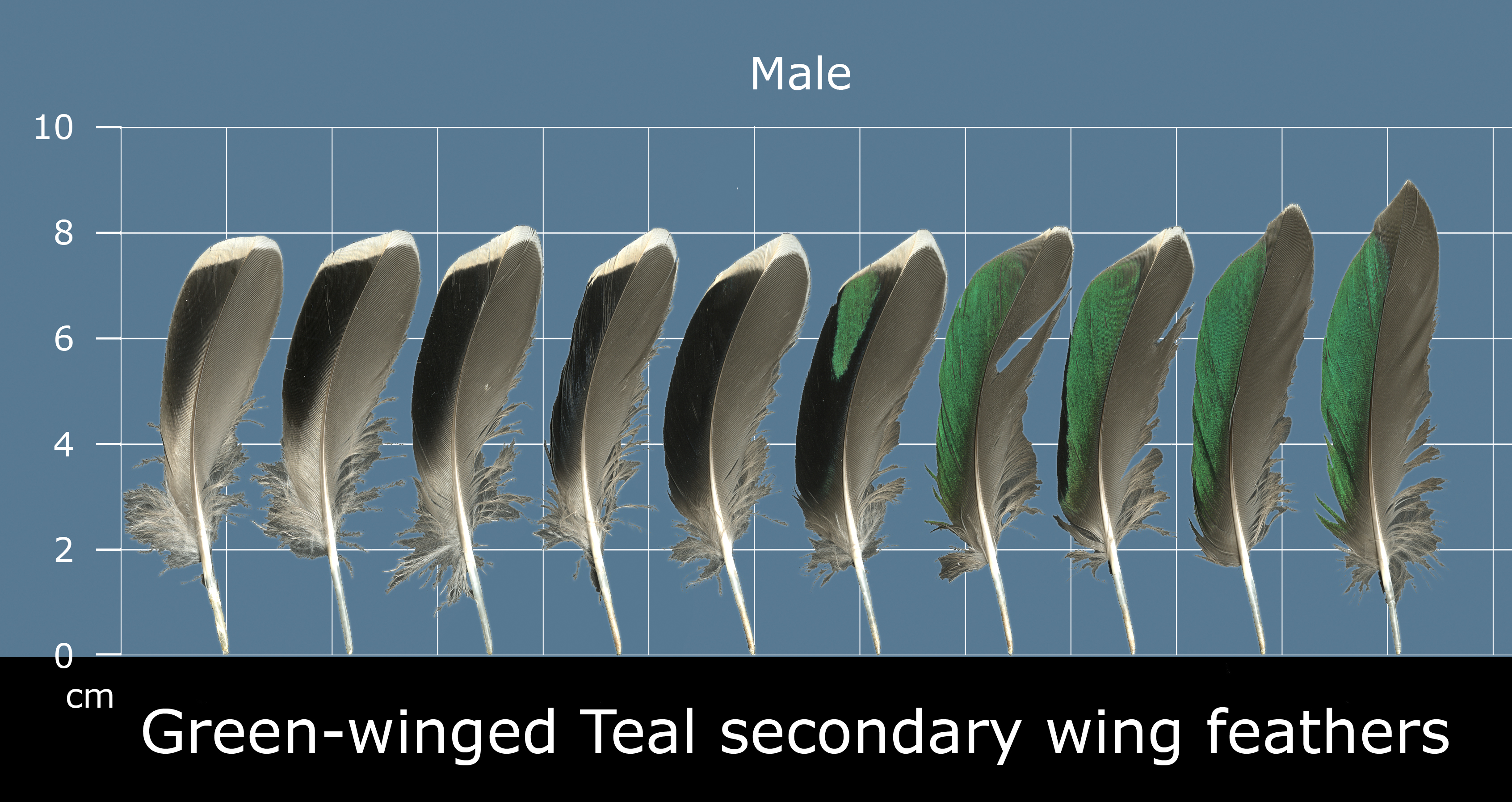| Identify My Feather | Browse Scans | Search Scans | Glossary |


IDENTIFY FEATHER: DETERMINING FEATHER POSITION
How to Determine Feather Position
If you would like to see all feathers matching your other search criteria (pattern, color, etc), simply make no selection for Feather Position. However, if you know the position of the feather you are trying to identify, you can significantly narrow your search.
The following tutorial may help you determine your feather's position.
The Feather Atlas illustrates flight feathers, meaning the primaries (outer wing feathers), secondaries (inner wing feathers) and rectrices, or tail feathers. The positions of primaries and secondaries on a spread wing are illustrated in the Glossary.
In the early years of the Feather Atlas, we included a selection of primaries and secondaries in a single "wing feather" scan for each species. Such scans always show at least the outer six primaries, since these feathers often have distinctive shapes useful in identification. Later, we decided to provide separate scans for these two types of wing feathers. We are in the process of replacing the older "wing feather scans" with separate primary and secondary scans, but this is not yet complete.
For practical reasons, the Feather Atlas does not include scans of the smaller coverts or body feathers, with a few exceptions for birds with body feathers that are particularly large (for example, Bald Eagle) or distinctively patterned (for example, Turkey). If you think your unknown feather might be a body feather, make no selection for Feather Position, and your search will include all feathers matching your remaining criteria.
Overview of Feather Characteristics
PRIMARY WING FEATHERS

- elongate, finger-like tips on outer primaries, especially in birds of prey
- pointed tips
- very long quills
SECONDARY WING FEATHERS

- rounded tips
- slightly asymmetrical vanes
- shafts usually curved
- in dabbling ducks, a colorful patch in the mid-vane
TAIL FEATHERS

- outer with feathers very asymmetrical vanes
- central feathers exactly symmetrical
- may be short or long, but no finger-like tips
- shafts may be curved or straight
- in woodpeckers, stiff, sharply pointed tips
Read On For More Detailed Information...
 Characters of Primary Wing Feathers:
Characters of Primary Wing Feathers:
Primaries are the outer wing feathers, attached to the bird's small, fused "hand" bones. Most groups of birds have 10 primaries. Primaries usually have pointed, as opposed to rounded or square, tips. However, inner primaries often closely resemble the outer secondaries in shape. Primaries are most easily recognized in soaring birds, such as many birds of prey, in which the outer primaries have elongated finger-like tips formed by a distinct notch in the posterior vane, and sometimes by emargination in the anterior vane (see the detailed primary feather illustration in the Glossary). Because primaries provide most of the power in flight, they are strongly attached to the wing by long quills.
A special feature of the primaries of some birds is a waxy-looking patch on the underside of the feather along the shaft. This patch is called tegmen (see illustration in the Glossary). Tegmen is most strongly developed in waterfowl. The Feather Atlas includes scans of the underside of the primaries of Northern Shoveler and Greater White-fronted Geese to illustrate the appearance of tegmen. If your unknown feather has this tegmen patch, it is a primary, and probably from a duck, goose, or swan.
 Characters of Secondary Wing Feathers:
Characters of Secondary Wing Feathers:
Secondaries are the inner wing feathers, attached to the ulna bone of the lower "arm". The number of secondaries is highly variable, related to wing length (the Feather Atlas illustrates a maximum of 12 secondaries). Unlike primaries, secondaries typically have rounded or squared ends. The shafts of secondaries are often curved. Their vanes are usually slightly asymmetrical (the outer vane a bit narrower than the inner vane). In dabbling ducks, the secondaries often have a brightly colored patch that forms the "speculum" on the spread wing, as seen in this scan of Green-winged Teal secondaries:

 Characters of Tail Feathers:
Characters of Tail Feathers:
The most common number of tail feathers is 12, though there is variation among bird groups. The left and right tail feathers are mirror images of each other, and so the Feather Atlas illustrates only the right half of the tail, with the outermost feather on the left of the scan, and the central tail feather on the right side. The outermost tail feather is highly asymmetrical (narrow outer vane, broad inner vane). The feathers become more symmetrical toward the center, with the two central tail feathers usually exactly symmetrical (vanes on both sides of the shaft equal in width) and the shaft perfectly straight.
In some groups of birds, tail feathers are easily recognized. For example, woodpecker tail feathers have pointed, stiffened tips that brace the bird against tree trunks. Many gamebird tail feathers are important in display and thus are boldly patterned and/or elongated. In other groups, such as birds of prey, tail feathers and secondaries may be difficult to distinguish. When in doubt, select both "secondary wing feathers" and "tail feathers" under the Feather Position option.
|
Last Updated: April 17, 2023
U.S. Fish and Wildlife Service Home Page | Department of the Interior | USA.gov | About the U.S. Fish and Wildlife Service | Accessibility | Privacy | Notices | Disclaimer | FOIA |
 |
|
